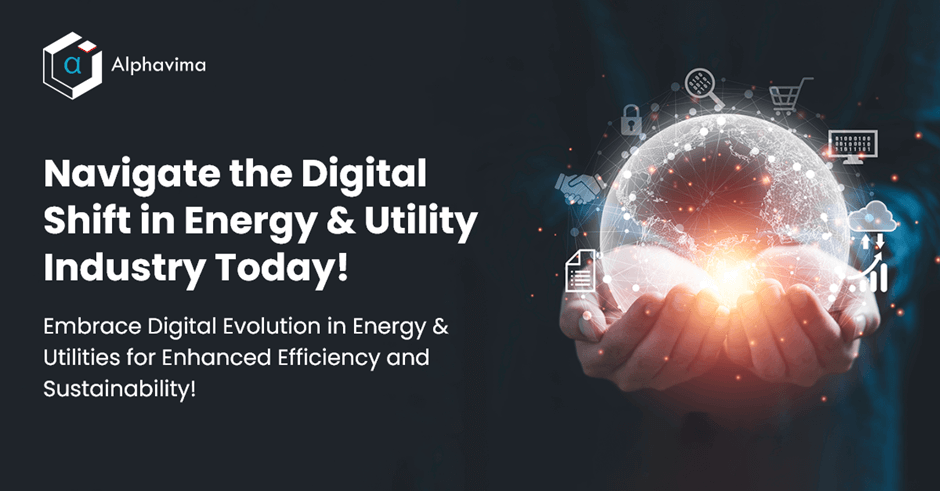Blog
Digital Transformation in the Energy and Utilities Industry
01 Dec 2023

Technology adoption and digital transformation in the utility industry not only enhance operational efficiency but also help meet sustainability goals and improve customer service.
Utilities need to continue exploring and integrating new technologies to address the evolving challenges and opportunities in the sector. Replacing outdated technology with cutting-edge advancements allows utility companies to innovate extensively and rapidly, creating value in collaboration with their ecosystem partners.
What Is Digital Transformation in Utilities?
Digital transformation isn’t simply about adding new technology to existing processes. Successful digital transformation requires efficient ways of working across four focus areas and a commitment to transformation.
- Technology: Advanced communications and network connectivity technologies make up any digital transformation. With IoT, power utilities are modernizing.
- Business: To meet consumer demand for how services get delivered, determine how and what services to deliver digitally.
- Process: Use digital technologies to automate or streamline business processes. This might include anything from automating alerts to using a centralized digital platform to track and manage smart devices across facilities.
- Organizational Change: Create greater worker agility by integrating data and analytics across the organization.

How companies are becoming more data-driven and moving faster to the cloud
Every industry is going through digital transformation and the energy and utility market is no exception. These companies need to adopt various digital changes in their business models and processes to transform the way energy is produced, delivered, and consumed across the value chain. Businesses can enhance operational performance, make better business decisions, and improve the customer experience by successfully leveraging data and providing more accurate information via predictive analytics.
The drive for energy & utility analytics.
The global utilities and energy analytics market size is expected to reach $6.55 billion by 2028 and record a steady CAGR in revenue over the forecast period, according to the latest analysis by Emergen Research. The need to optimize operations and business practices for maximum cost-effectiveness is driving the use of energy and utility analytics services and solutions among energy and utility companies.
The adoption of smart meters, prioritization of power generation planning, and the need for accurate forecasts are believed to be key factors driving the growth of the energy analytics and utility market. For utility companies, ERP as an accelerator is essential to gain insights into customer behavior, determine ways to improve solution performance, and gain insights to grow the business. With data analytics, energy providers can customize their programs to maximize customer engagement as well as modernize those relationships to improve engagement.
The renewable energy market is another area that can benefit from data analytics and reporting. According to a report by Mordor Intelligence, solar energy is expected to continue to dominate the renewable energy market, generating more electricity than wind and hydro in the next four years. With analytical solutions and services, utilities can optimize energy generation and planning by providing accurate energy production forecasts.
The Growth of Cloud-Based Analytics Solutions
Cloud-based solutions and data-driven analytic systems are also becoming essential for managing the vast amounts of data continuously generated by smart meters, IoT sensors, customer home energy devices, etc. It helps simplify energy efficiency programs and allows utilities to provide flexible power, provide scalability, ease equipment maintenance, and provide better customer service.
Embracing a new mindset to shape a better future:
Several large utilities in Europe and North America are leading the renewables expansion. The world’s most complex machine—the electric grid—must become far more flexible and resilient to deliver sustainable, affordable, reliable power. Combined with the ongoing digitalization of assets, processes, and products, the effect has been profound.
The industry will look to its leaders to deliver changes, because change is needed for the industry to seize new opportunities. New leadership is needed to address the areas where utilities have struggled. Industry leaders will draw on the lessons learned in extreme weather events to power a new era of transformation and usher in a new kind of leadership.
Old approaches will not address the increased complexity in the energy mix, network management, and energy markets. New approaches are required to deliver sustainable, affordable, reliable power. customers will look to utility leaders to strike a balance between ensuring reliable and safe energy supplies, bringing new products and services to market faster, and managing the energy transition.
This new mindset will dramatically change utilities’ approach to technology adoption. The utilities industry has never experienced the level of disruption or the pace of change it currently faces. Some find these new challenges daunting. But experts at change are emerging, showing the industry the art of the possible.
Conclusion
By eliminating legacy systems and taking a data-driven, cloud-enabled approach, energy and utility companies can reduce operating costs and increase efficiency. Big data and analytics also enable them to provide customers with better services and design programs to save more energy - thus ensuring customer loyalty.
Initiate Change by Connecting with Our Technology Expert Today!
